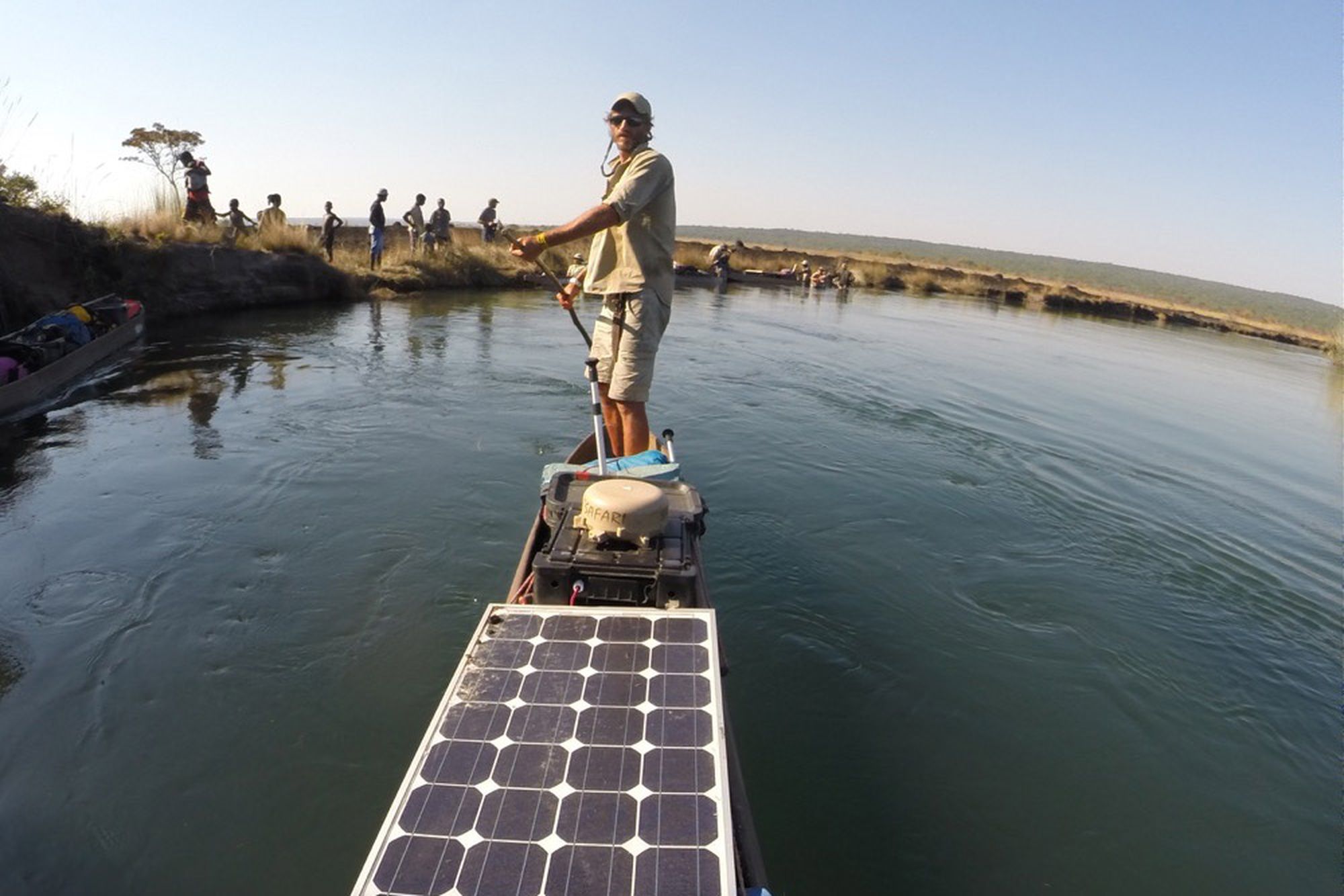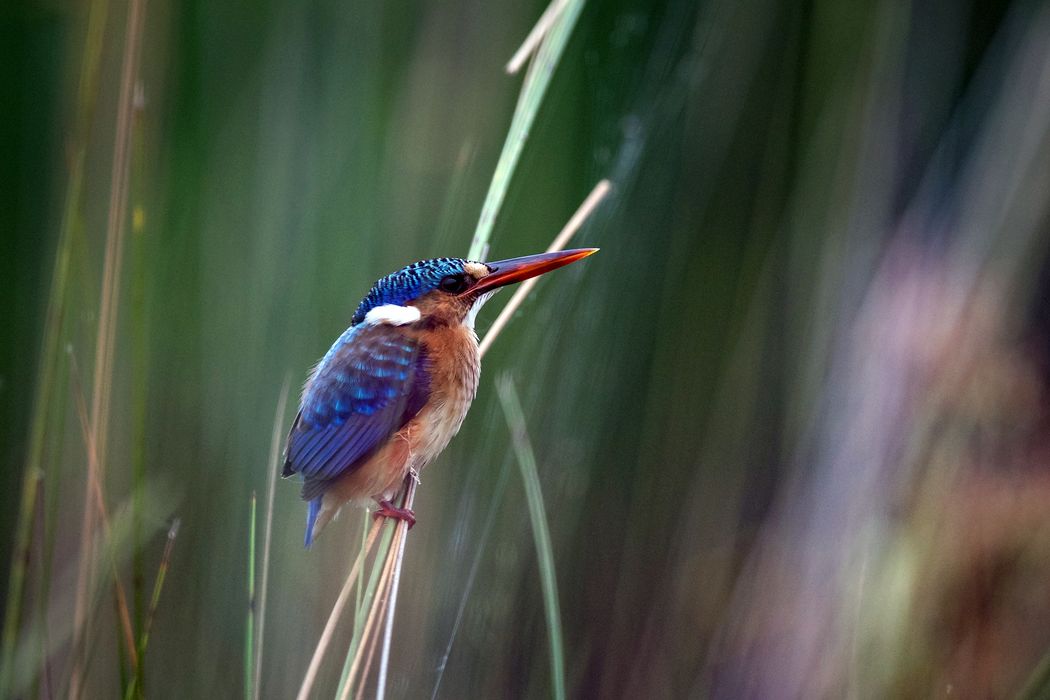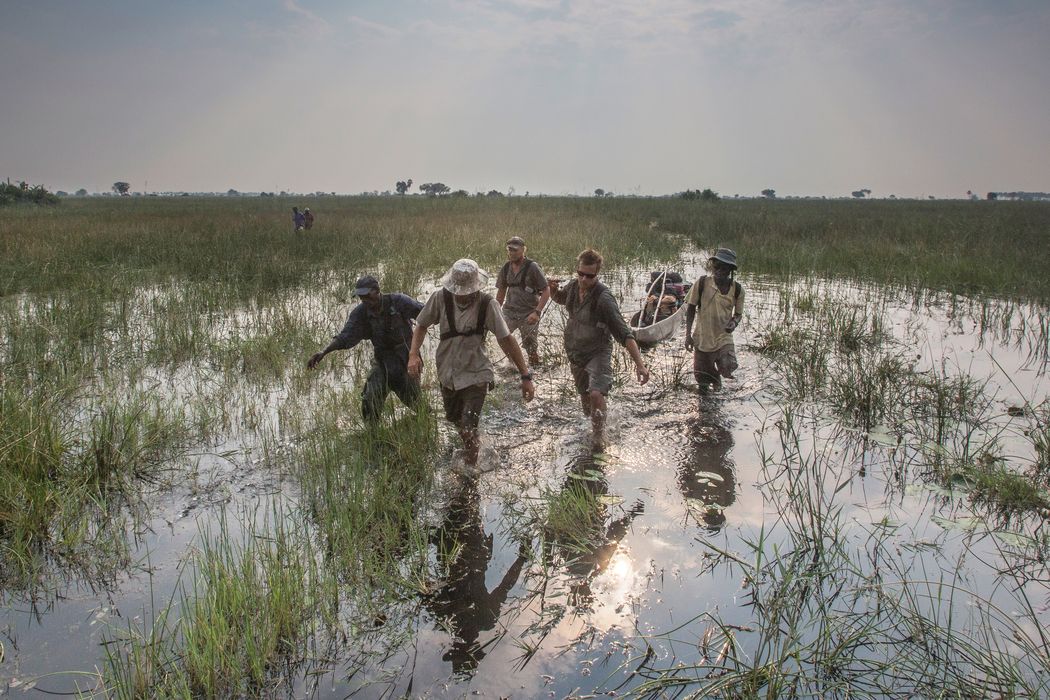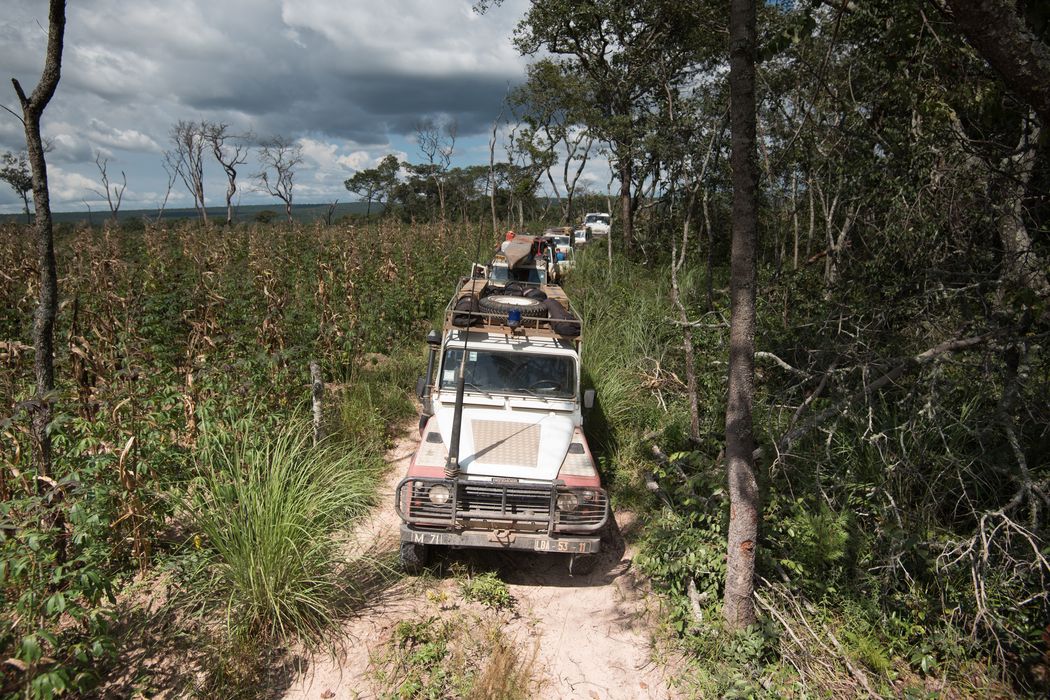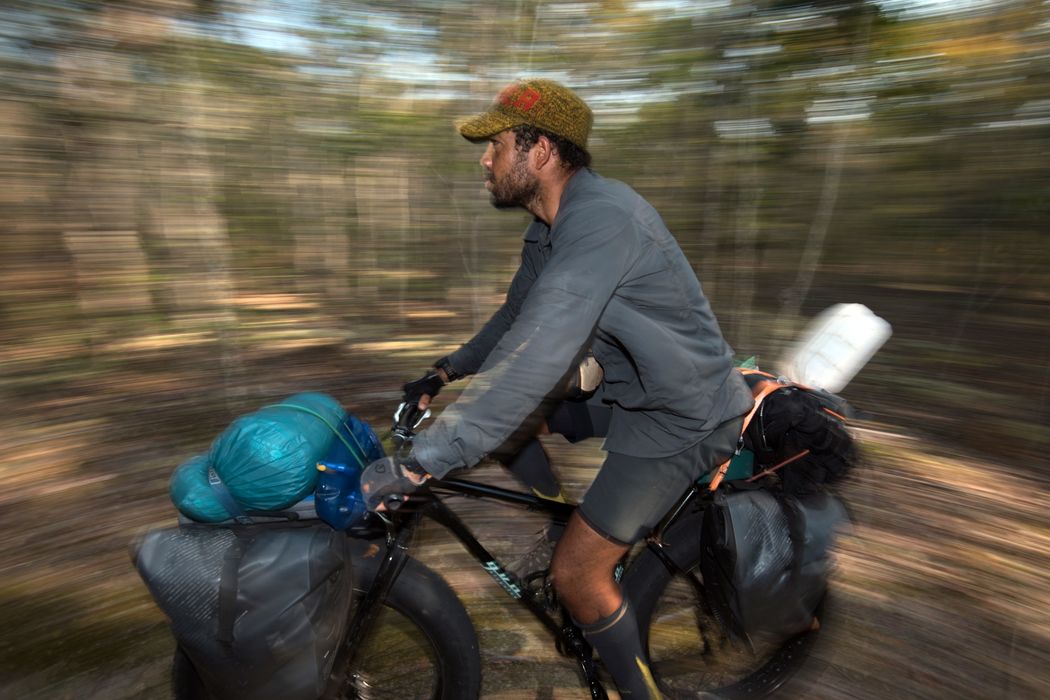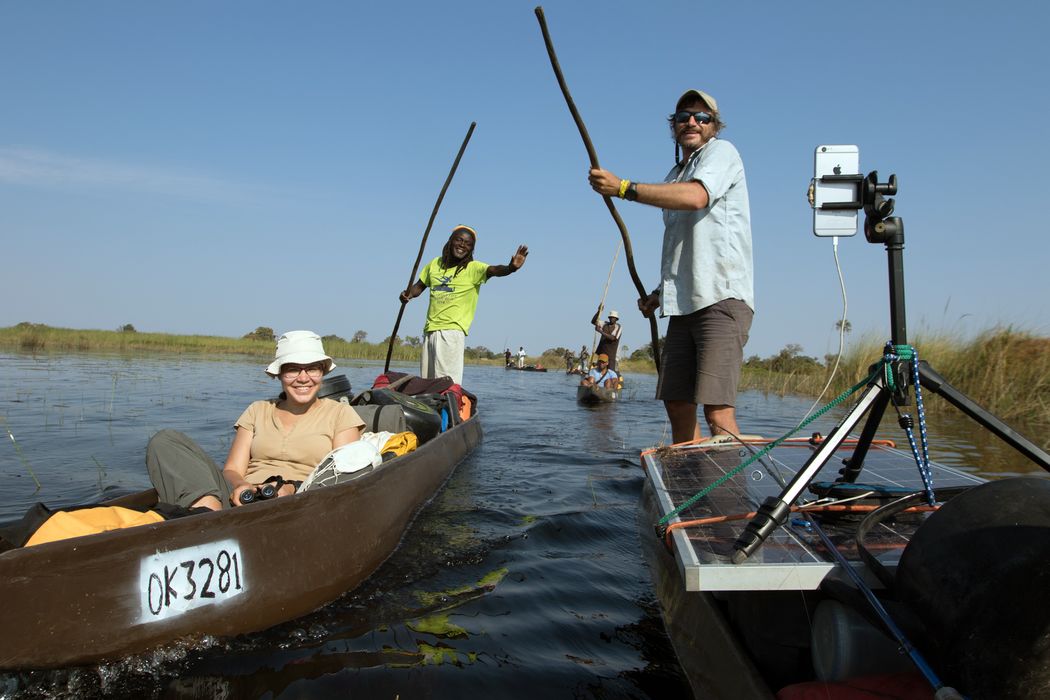SOURCE LAKES SCIENCE
OCTOBER - NOVEMBER 2016
The Route
Loaded up on vehicles full of research equipment and supplies, a full team of scientists returned to discover more accessible routes to the sources of the Cuando and Kembo Rivers in eastern Angola, which a smaller team had explored on mountain bikes a few months earlier.
These rivers begin their flow out of marshy lakes tucked inside a seemingly endless woodland. The oak-like miombo trees form an open canopy that lets in a lot of light, but also provides shade unavailable in the grasslands. Plants and animals that would struggle in the light and heat thrive in the cooler microclimate under the trees’ branches. Water evaporates more slowly here as well, helping the woodland retain moisture that helps feed the lakes, rivers, and, ultimately, the Okavango Delta itself.
Local communities burn the wood for personal use and commercial trade as charcoal. Like many forms of natural resource extraction including hunting, this is an ancient practice that is now being pushed to unsustainable levels. Charcoal burning of the woodlands and bushmeat hunting are two of the greatest threats to the preservation of the natural balance in the Angolan highlands.
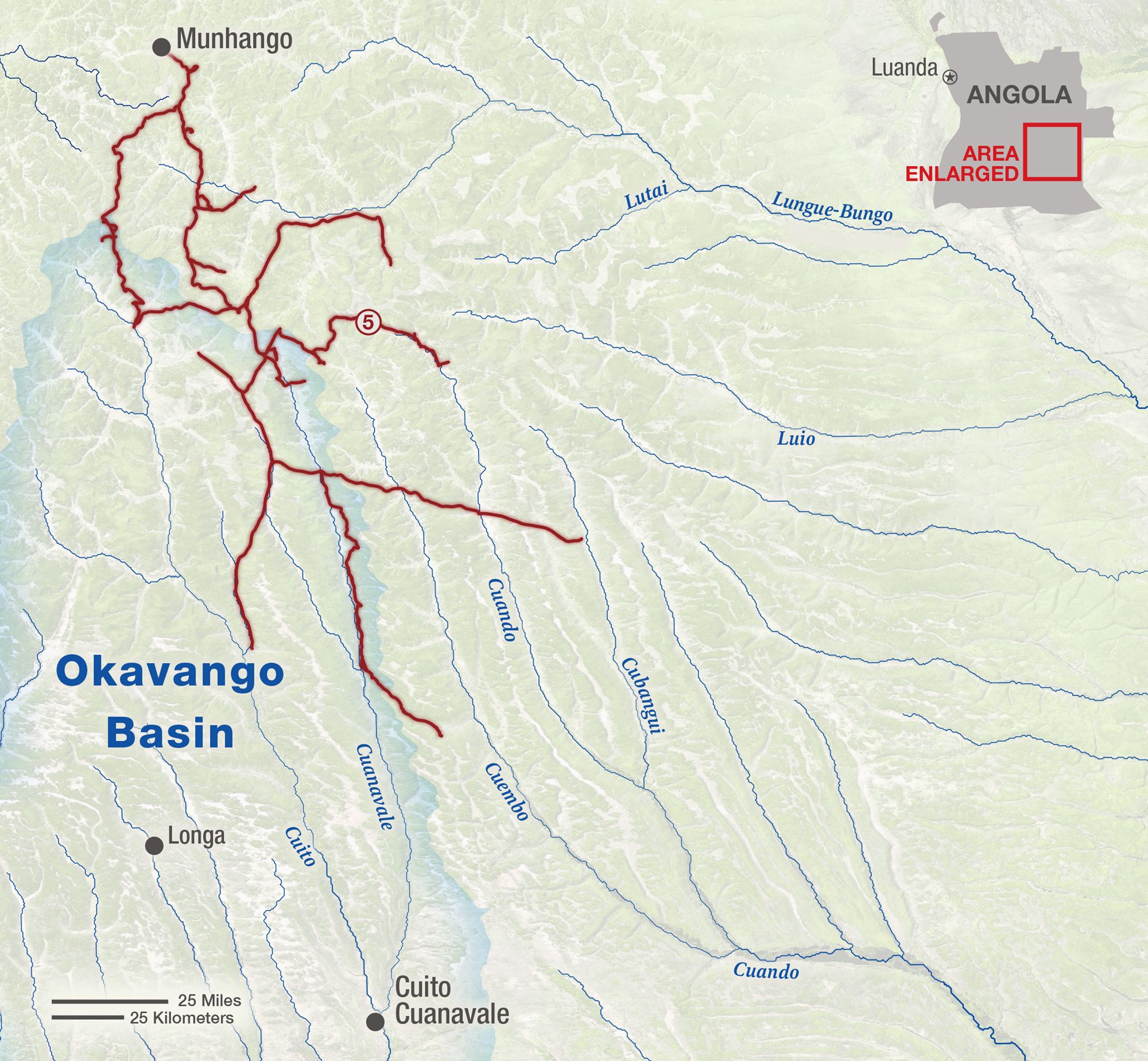
MAP BY MARTIN GAMACHE, ART OF THE MAPPABLE
The Mission
With an expanded team of experts in birds, reptiles, fish, insects, plants, and more, this expedition set out to complete the first biological survey of the Cuando and Kembo sources during the Southern Hemisphere’s spring season. With rain refreshing the landscape, different plants grow and blossom, different insects emerge, and different predators move in to feast on the abundance.
Once again using various nets and traps, the team caught animals in the water, on land, and in the air; identified them; and sampled them for further DNA barcoding and analysis back in labs. The team also conducted interviews with people in the nearby villages, who provided information about their socioeconomic situation—information critical to understanding and relieving the pressures on wildlife in the region.
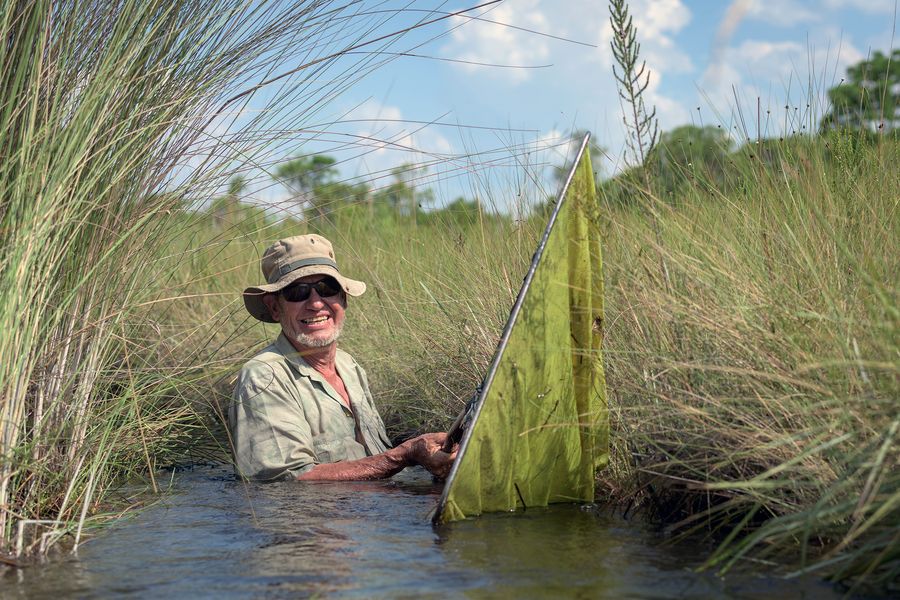
PHOTOGRAPH BY KOSTADIN LUCHANSKY/ANGOLA IMAGE BANK
The Highlights
To everyone’s delight, camera traps set during the earlier fatbike expedition revealed a wide array of animals that shy away from humans and are only rarely spotted in person during an expedition. Leopards, cheetahs, wild dogs, bushpigs, honey badgers, and hyenas, among many others, all made their presence known. The presence of these animals—in these areas where hunting pressures are high—shows that they have the ability to bounce back if given proper protection.
The team made several important contributions to science on this expedition. A significant benchmark was reached on this expedition when they identified the 400th bird species of the project. There were also many sightings that expanded the known ranges of certain birds and plants. In addition, the team identified 27 of the 104 known species of bats in Angola—they even snapped the world’s first photo of live Angolan long-eared bat.
Reptiles and amphibians also made a strong showing during the rainy season, including the strange, subterranean spade-snouted worm lizard and a potentially newly discovered species of rain frog. And this spider, with a prominent horn that holds its stomach muscles and helps it suck in food more powerfully, was described by scientists as the “find of a lifetime.”
With a camera in every pocket and solar cells for recharging, the team shared their animal sightings, stunning sunsets, and thoughts and reflections in real time throughout the expedition. See it all in their Instagram feed.
OTHER EXPEDITIONS
In late 2016, the team completed the first biological survey of the Cuando and Kembo river sources in eastern Angola.
This 2015 expedition, at nearly six months and 2,414 km (1,500 miles), lasted longer and covered more mileage than any of the others.
The team was able to conduct research in this once war-torn region with the help of an international landmine-removal organization.
On hardy fatbikes, the team checked their camera traps, interviewed villagers, and continued to document biodiversity in Eastern Angola.
Expedition leader Steve Boyes conducts annual surveys of birds across the delta, building a data record and assessing the landscape’s health.
PHOTOGRAPHS BY KOSTADIN LUCHANSKY/ANGOLA IMAGE BANK (BIRD); GÖTZ NEEF (SOLAR PANEL/BOAT)
